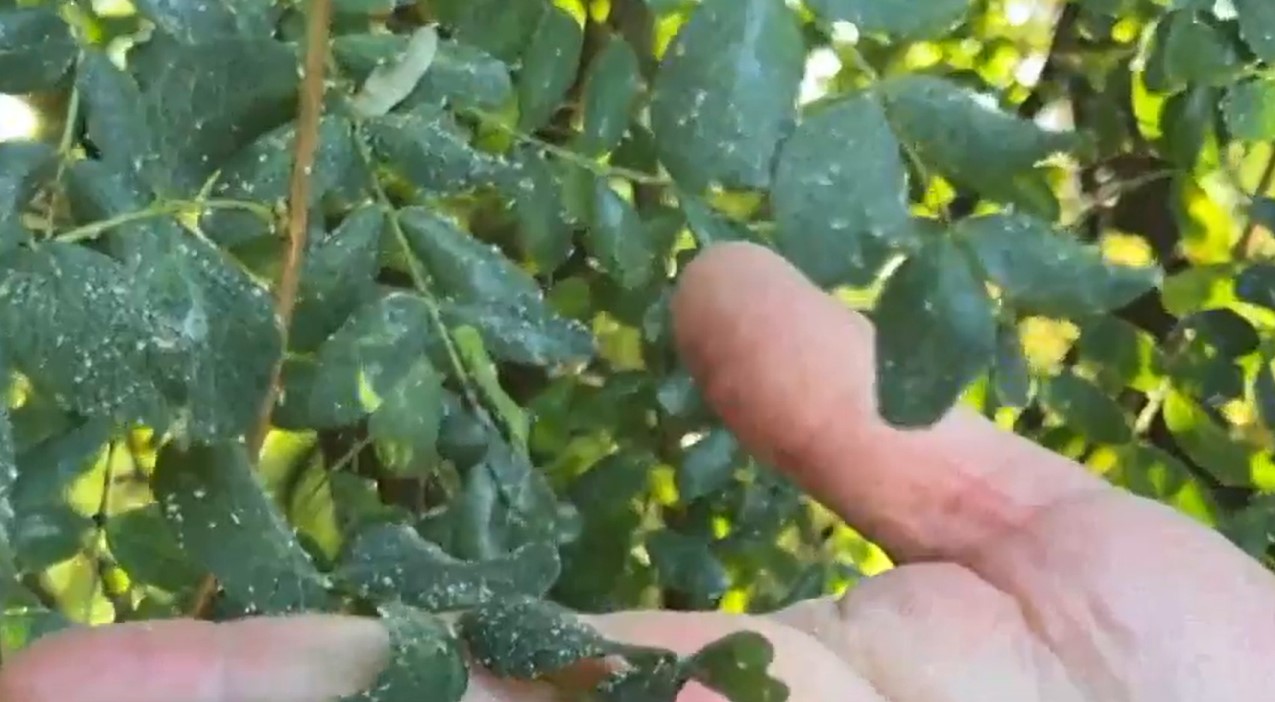
Falling from trees in amounts quite high in Calgary for this time of year is a sticky plant sap substance known as ‘honeydew.’ The tiny culprits responsible are aphids — small pear-shaped insects that feed on plant sap and leave a noticeable mess behind.
“Yeah, the sap is all over your shoes and cars — it’s a nightmare to clean off,” one person told CityNews.
“One of my friends is allergic to it,” said another. “We were walking the other day and he starting sniffling and stuff. He gets all red in the eyes and he starts feeling bad so it’s kind of a problem.”
A local expert says the city’s current weather conditions are perfect for the small green insects.
“Aphids are very predominant this year because of our very wet spring, and there is lots of food available for them so they’re eating whatever they want,” explained Lisa Silva, operations advisor at Blue Grass Nursery. “So, the aphid poop is a result of aphids, so you get a lovely sticky sap all over your plants, your deck, whatever the aphids are around.”
Honeydew attracts a fungus which creates a black scum on services, and with the hot and dry weather in the city, infestations are really bad.
“So, there are chemicals like insecticidal soap, which is your less toxic one, not harmful to animals or people, and then there are some other chemical options as well that come in ready-to-use sprays that you can apply,” Silva said.
Those relying on the city to clean up the mess will be out of luck.
“With over 500,000 public trees and thousands of hectares of park space, the city doesn’t track or manage aphid population, especially because while the honeydew they produce is frustrating, their lasting impact to our urban forest and green spaces is minimal when compared to other pests that Calgary Parks does address and monitor,” the city said in a statement.
And, if you’re curious about taste testing the honeydew nectar, Silva says she wouldn’t recommend it.
“It’s called honeydew but it’s still aphid poop,” she laughed.